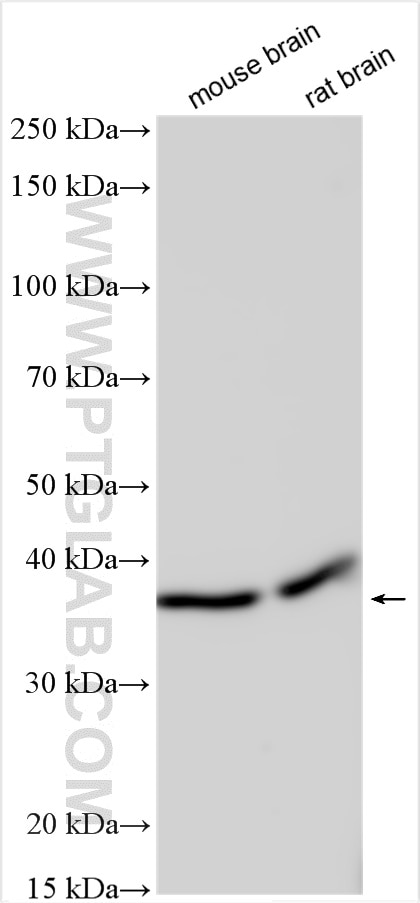Validation Data Gallery
Tested Applications
| Positive WB detected in | mouse brain tissue, rat brain tissue |
Recommended dilution
| Application | Dilution |
|---|---|
| Western Blot (WB) | WB : 1:1000-1:6000 |
| It is recommended that this reagent should be titrated in each testing system to obtain optimal results. | |
| Sample-dependent, Check data in validation data gallery. | |
Product Information
26442-1-AP targets ZCCHC12 in WB, ELISA applications and shows reactivity with human, mouse, rat samples.
| Tested Reactivity | human, mouse, rat |
| Host / Isotype | Rabbit / IgG |
| Class | Polyclonal |
| Type | Antibody |
| Immunogen | ZCCHC12 fusion protein Ag23858 相同性解析による交差性が予測される生物種 |
| Full Name | zinc finger, CCHC domain containing 12 |
| Observed molecular weight | 35-40 kDa |
| GenBank accession number | BC031241 |
| Gene Symbol | ZCCHC12 |
| Gene ID (NCBI) | 170261 |
| RRID | AB_3085873 |
| Conjugate | Unconjugated |
| Form | Liquid |
| Purification Method | Antigen affinity purification |
| UNIPROT ID | Q6PEW1 |
| Storage Buffer | PBS with 0.02% sodium azide and 50% glycerol , pH 7.3 |
| Storage Conditions | Store at -20°C. Stable for one year after shipment. Aliquoting is unnecessary for -20oC storage. |
Background Information
Zinc finger CCHC domain-containing protein 12 (ZCCHC12) functions as a transcriptional coactivator in the bone morphogenetic protein (BMP)-signaling pathway (PMID: 19578717; 19416967). It positively modulates BMP signaling by interacting with SMAD1 and associating with CBP in the transcription complex (PMID: 18160706). It contributes to the BMP-induced enhancement of cholinergic-neuron-specific gene expression. A variant in ZCCHC12 may play a role in X-linked cognitive disability (PMID: 18798319).
Protocols
| Product Specific Protocols | |
|---|---|
| WB protocol for ZCCHC12 antibody 26442-1-AP | Download protocol |
| Standard Protocols | |
|---|---|
| Click here to view our Standard Protocols |
